5 Tips on When and How to Prune Butterfly Bushes (In-Depth Guide)
-
Pete Ortiz
- Last updated:
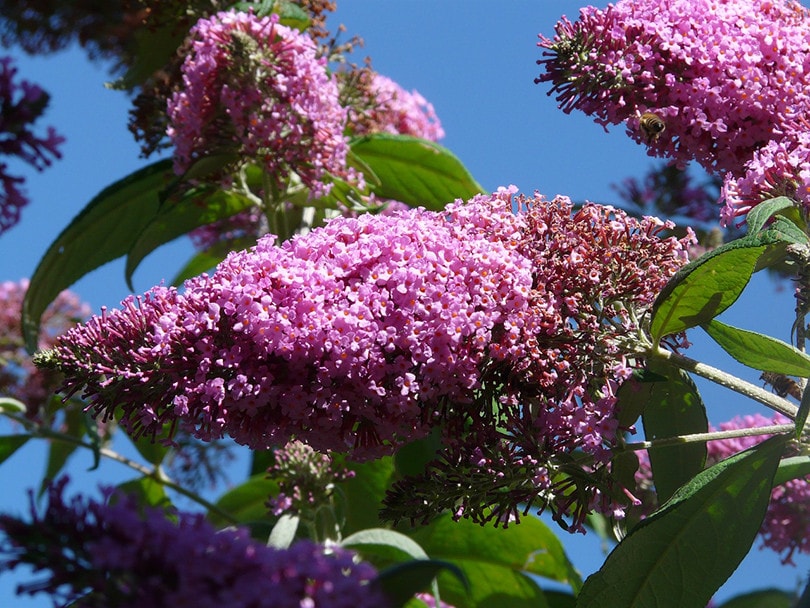
The butterfly bush is a shrub native to China and is named for its resemblance to a butterfly in flight. It is a deciduous shrub, meaning it loses its leaves in winter. Typically, it blooms from late spring to early fall.
The shrub is popular for its beautiful flowers and is a staple in many gardens and homes because of its aesthetic appeal. If you’re like most butterfly bush enthusiasts, you want your plants to be healthy and lush.
But sometimes, overgrown butterfly bushes can look a bit messy.
While the butterfly bush is a low-maintenance plant, it does require occasional pruning in order to keep it looking its best. Here are a couple of tips on how to keep your bushes looking great. Read on.
When Should You Prune Butterfly Bushes?
The best time to prune butterfly bushes is in the late winter or early spring before new growth begins. This is because the plant is dormant during this time and will not be adversely affected by pruning.
You can also prune butterfly bushes during the summer after they have finished blooming. Doing so will encourage new growth and more blooms in the fall.
However, it’s worth noting that you don’t always have to prune your plants every year, and there are no adverse effects from not doing so.

How to Prune Butterfly Bushes
When pruning butterfly bushes, it’s important to use sharp, clean pruning shears. This will help ensure that you make clean cuts that won’t damage the plant. Also, be sure to sterilize your pruning shears before using them. This will help prevent the spread of disease.
1. Get Your Timing Right
It’s crucial that you prune butterfly bushes at the right time of the year. As we mentioned earlier, the best time to prune butterfly bushes is in the late winter or early spring. This is because the plant is dormant during this time and will not be adversely affected by pruning.
It’s worth noting that there are two types of butterfly bushes. Buddleia alternifolia and Buddleia davidii. Buddleia alternifolia blooms on new growth, while Buddleia davidii blooms on old wood. This means that if you prune Buddleia davidii in the early spring, you may cut off the buds that will bloom later in the season.
If you’re not sure which type of butterfly bush you have, it’s best to wait until after it has finished blooming to prune it. This will ensure that you don’t accidentally cut off any buds.
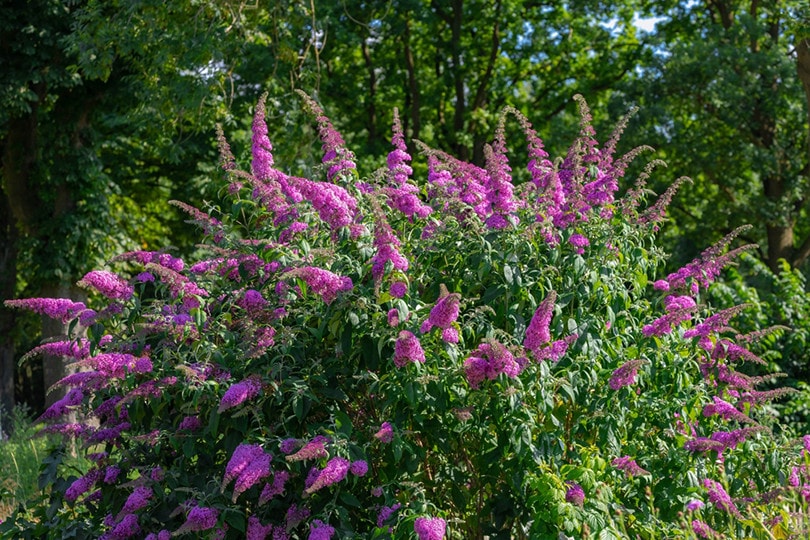
2. Ready Your Tools
Before you start pruning, it’s important to make sure you have the right tools. By tools, we mean a clean, sharp pair of pruning shears and safety equipment. Safety equipment should include gloves and eye protection.
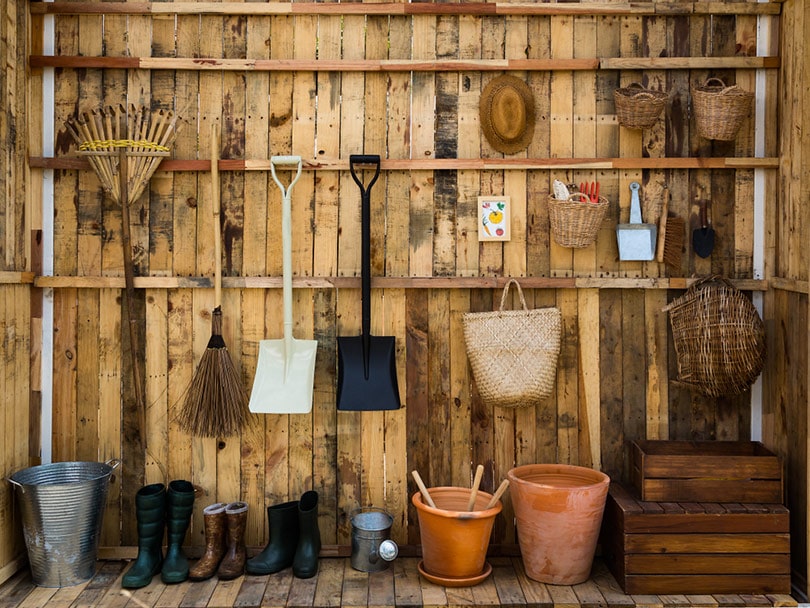
3. Start With the Dieback
Remove any dead, diseased, or dying branches from previous harsh winters and disease. These are often referred to as “diebacks.” To identify dieback, look for branches that are brown or black in color. You should also look for branches that are dry and brittle.
Once you’ve identified the dieback, use your pruning shears to cut the branches at a 45-degree angle. This will help promote new growth and prevent the spread of disease.
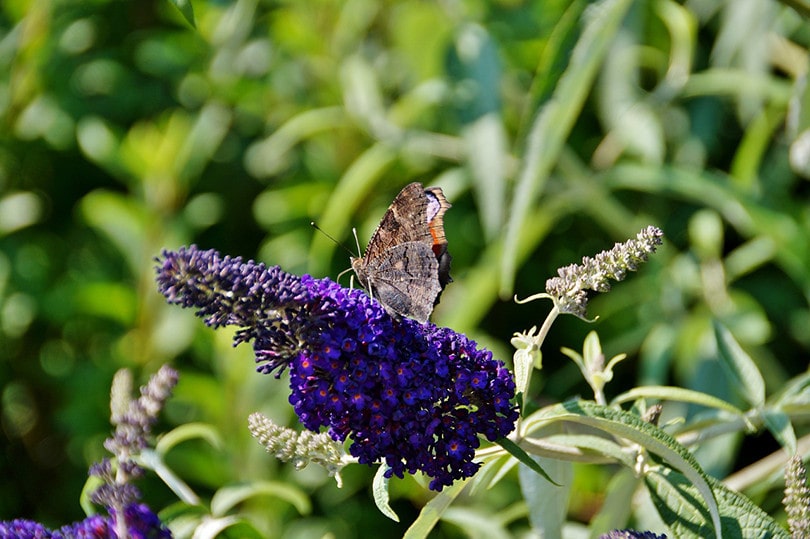
4. Prune the Actual Plant
Now it’s time to prune the actual plant. Different butterfly bush types have different pruning requirements. Here’s how you prune each of them.
- Buddleia davidii – Prune butterfly bushes with a hard cut since they’ll likely have dieback from the previous winter. Fortunately, they can handle intense pruning, so don’t be afraid to cut them back aggressively. Doing so will encourage new growth and more blooms later in the season.
- Buddleia alternifolia – These butterfly bushes should be lightly pruned, as they don’t often have dieback. Remove up to one-third of the plant immediately after flowering in the summer. Remember to follow the shape of the shrub whenever you prune.
In case you want a taller butterfly bush, you should cut it to about two feet. Doing so makes the plant produce more upward-growing stems. Most people then plant low-growing butterfly bushes beneath the tall ones to highlight the latter’s beautiful flowers.
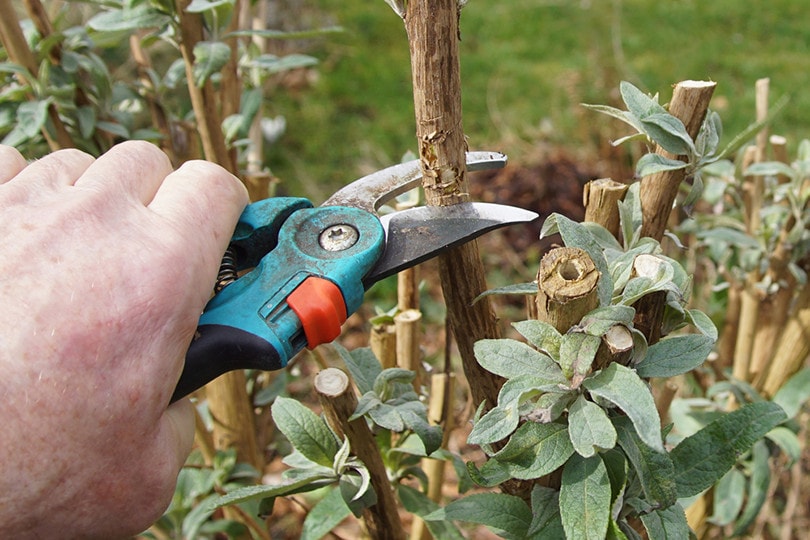
5. Cut All the Spent Blooms
Finally, you should cut all the spent blooms, also known as “deadheading.” This is especially important if you want your butterfly bush to rebloom. To deadhead, simply cut off the blooms that have already withered. Make sure to cut them at a 45-degree angle so that new blooms can grow in their place.
How to Care for Your Butterfly Bushes
As we’ve seen, pruning butterfly bushes is a relatively easy gardening task. These lovely bushes are also easy to grow, but knowing a few things about them will make it even easier.

Butterfly Bushes Should Be Planted in Full Sunshine
The butterfly bush is one of the few that thrive in full sunshine. They require at least 8 hours of bright sunlight every day, including in warmer areas of the country. Anything less than 6 hours of full sun daily will prevent your butterfly bushes from becoming as beautiful as possible.
Make Sure the Soil for Your Butterfly Bushes Drains Very Well
One of the biggest problems you’ll face with butterfly bushes is that their roots tend to rot very easily. It’s even worse if they’re stuck in soil that stays wet and never dries out. In fact, wet soil is one of the worst situations for a butterfly bush and can kill them. Usually, this happens during the winter, and you won’t even notice your bushes are dead until spring. In short, make sure they’re in well-draining soil.
Don’t Overwater Your Butterfly Bushes
Just as your butterfly bushes need soil that drains well, you should also be aware of over-watering them. That’s especially true if the soil where you live has a lot of clay. If you over-water your butterfly bushes, you’ll notice that their stems become weak with fewer blooms.
Plant New Butterfly Bushes in the Spring
To give your butterfly bushes the best chance of surviving their first season, plant them in the spring rather than in the fall or early winter. The challenges of a long, cold winter, especially in USDA zones 5 and 6, can be too much for a butterfly bush and kill it before it gets a chance to make your garden look amazing.

Don’t Amend Your Soil When Planting Butterfly Bushes
Although it makes sense when planting new butterfly bushes, there’s no need to amend the soil in any way. You don’t have to add topsoil, for example, or make any other changes. Indeed, if you have clay soil, amending it before you plant your butterfly bushes can cause drainage problems that kill the plants.
Plant Your Butterfly Bushes Higher Than Other Plants
Usually, when you place a new plant in your yard, you plant it even with the ground. For butterfly bushes, however, you should position the base of the plant so that it sits a few inches off the ground. This creates a small hill around the bush’s base that helps water drain away, keeps the roots from getting inundated with water, and helps your butterfly bushes settle into their new home.
Be Patient With Your Butterfly Bushes
If you’re already a seasoned gardener, you know that patience is a virtue, especially when waiting for edible fruits and vegetables to emerge. With butterfly bushes, patience is also necessary because they tend to be one of the last plants to bloom every spring. You’ll often notice that everything in your garden looks lovely and green except your butterfly bushes. In most cases, that’s perfectly normal, so be patient and don’t panic. Eventually, they will bloom and look beautiful.
 Final Thoughts
Final Thoughts
Pruning butterfly bushes isn’t as daunting as it may seem. Just follow the steps we outlined above, and you’ll have no trouble keeping your bush healthy and blooming all season long! Remember, only use clean, sharp pruning shears when pruning your butterfly bushes. Also, always time your pruning correctly if you want a bountiful bloom.
See also: Is My Butterfly Bush Dead? (4 Signs to Look For)
- https://www.provenwinners.com/learn/how-plant/proven-winners-ultimate-guide-butterfly-bush
- https://www.gardeningknowhow.com/ornamental/shrubs/butterfly-bush/butterfly-bush-pruning-how-to-prune-a-butterfly-bush.htm
- https://www.provenwinners.com/learn/how-plant/proven-winners-ultimate-guide-butterfly-bush#:~:text=Butterfly%20bush%20need%20full%20sun,than%206%20hours%20of%20sun.
- https://www.gardeningknowhow.com/garden-how-to/soil-fertilizers/what-is-slow-release-fertilizer.htm
- https://www.wikihow.com/Prune-a-Butterfly-Bush
Featured Image Credit: Hans, Pixabay
Contents


